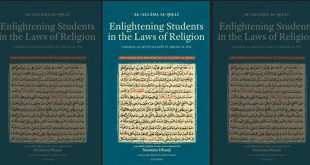An Arab and Islamic art museum is opening in New York to ‘challenge misconceptions’ about Islam
What kind of Islamic art has the power to open American hearts and minds, at a time when Donald Trump has relaunched his attempt to ban entry from several Muslim-majority nations?
In May, a new Institute of Arab and Islamic Art, set up by Qatar’s Sheikh Mohammed Rashid Al-Thani, will open in downtown Manhattan. The timing is not accidental. Al-Thani is trying to humanise Islam and broaden perceptions of it in the US. He hopes the institute will “not only showcase the breadth of art and culture from the Arab and Islamic worlds, but also challenge certain stereotypes and misconceptions that hinder cross-cultural understanding”, he told the Art Newspaper.
Some hope, you may say. The depth of prejudice flaunted by Trump (and apparently shared by many of his voters) is so aggressive in its refusal to engage with a complex world that it seems unlikely to be healed by a bit of Islamic art in New York. Surely that’s the wrong location, anyway.
Yet that’s too pessimistic. If there is one thing that can communicate across every border and cultural gap it is art. Where words define and definitions divide us, visual art is open, ambiguous and allows imaginations to wander in time and space. Looking at Islamic art allows non-Muslims to feel the inner beauty of beliefs and traditions we do not share, to look with “another heart / And other pulses”.
So the task of an Islamic art gallery is not so much to display masterpieces as to find a way to connect them in a living flow of colour and pattern that gets across the multidisciplinary ecstasy of these places. One place that does this very well is the V&A in London, which uses low lighting and aesthetically harmonious arrangements to unify ceramics, rugs, architectural fragments and calligraphy in a serene, entrancing installation. Islamic art is emotional; it changes your relationship with space and time. To open American minds, the Institute of Arab and Islamic Art needs to replicate that sublime psychological effect. It should be like wandering into the old part of an Arab city: less a museum than a medina.
Some Islamic art is more effective than others. If I was creating a dream collection, I would concentrate on the medieval caliphate of north Africa and Spain, where art reached the sumptuous yet reserved heights of delicate beauty that can still be savoured in Morocco and Andalusia. For instance, the minaret of the Koutoubia mosque in Marrakech is identical to the former minaret that is Seville’s cathedral bell tower. They were both built by the 12th-century Almohads. The abstract glory of north African and Andalusian art can still be savoured in portable works, though. A wooden minbar – or pulpit – carved in the medieval Moorish style would be the most enchanting object this new gallery could show.
source:theguardian
 Ijtihad Network Being Wise and Faithful Muslim in the Contemporary World
Ijtihad Network Being Wise and Faithful Muslim in the Contemporary World
